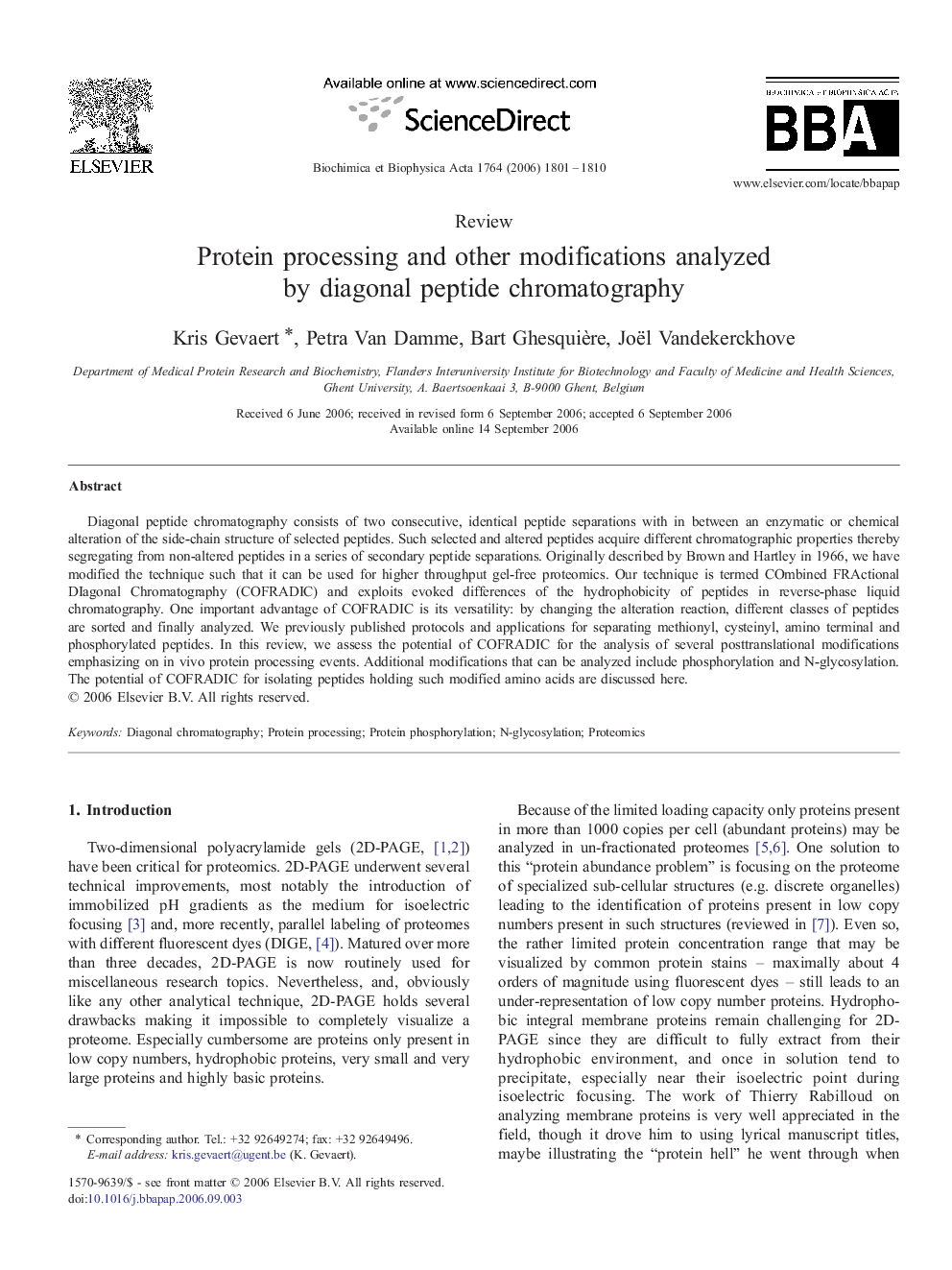| Article ID | Journal | Published Year | Pages | File Type |
|---|---|---|---|---|
| 1178526 | Biochimica et Biophysica Acta (BBA) - Proteins and Proteomics | 2006 | 10 Pages |
Diagonal peptide chromatography consists of two consecutive, identical peptide separations with in between an enzymatic or chemical alteration of the side-chain structure of selected peptides. Such selected and altered peptides acquire different chromatographic properties thereby segregating from non-altered peptides in a series of secondary peptide separations. Originally described by Brown and Hartley in 1966, we have modified the technique such that it can be used for higher throughput gel-free proteomics. Our technique is termed COmbined FRActional DIagonal Chromatography (COFRADIC) and exploits evoked differences of the hydrophobicity of peptides in reverse-phase liquid chromatography. One important advantage of COFRADIC is its versatility: by changing the alteration reaction, different classes of peptides are sorted and finally analyzed. We previously published protocols and applications for separating methionyl, cysteinyl, amino terminal and phosphorylated peptides. In this review, we assess the potential of COFRADIC for the analysis of several posttranslational modifications emphasizing on in vivo protein processing events. Additional modifications that can be analyzed include phosphorylation and N-glycosylation. The potential of COFRADIC for isolating peptides holding such modified amino acids are discussed here.
